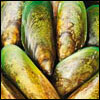|
|
 |
LCGC TV: Rudolf Krska on Mycotoxin Analysis Using LC–MS–MS
Mycotoxins are an important group of secondary metabolites produced by fungi that can cause disease in humans and animals. Rudolf Krska from BOKU, IFA-Tulln, in Vienna, Austria, describes why he uses LC–MS–MS in his analysis of mycotoxins and offers advice to separation scientists thinking about using the technique in their research. |
|
Finally... A Comprehensive, Seamless, Painless Alternative to LIMS
Waters NuGenesis® Lab Management System uniquely combines data, workflow, and sample management capabilities to support the entire product lifecycle. Experience a different approach to managing your laboratory with enhanced stability testing, streamlined sample submission, multi-vendor software connection and robust scientific search. It is everything you need to manage your scientific information— without the complexities and cost associated with today's LIMS solutions.
 Learn more Learn more
|
|
|
|
New VICI miniPDD Helium Inonization Detector
The VICI miniPDD (PDHID) uses about one fifth (20%) the amount of helium as the current versions, giving up only a bit of sensitivity and dynamic range. It is approximately one half the size of the D-4 series, but has nearly the same sensitivity – about 100 ppb for fixed gases. It is particularly well suited where the high cost of helium becomes a consideration.
 Learn more Learn more
|
|

|
LC Troubleshooting: Be Careful of the Flow Rate
As more and more workers are transferring liquid chromatography (LC) methods to ultrahigh-pressure LC (UHPLC), John Dolan has received an increasing number of email questions that demonstrate a poor understanding of the role of the mobile-phase flow rate in method scaling. Here, Dolan discusses the situations when changes in flow rate are fairly innocuous and when they can get you into trouble. |
|
 |
The LCGC Blog: A New Consortium of Researchers for Environmental Analysis and Remediation
LCGC blogger Kevin Schug and colleagues recently launched the Collaborative Laboratories for Environmental Analysis and Remediation (CLEAR) organization at U.T. Arlington to the public. CLEAR is an endeavor to create a consortium of experts interested in building and propagating activities related to the assessment of the potential impact of industrial activities on the environment, as well as the creation of new solutions to mitigate problems associated with these activities. |
|

Photo Credit: Scott Halistone/Getty Images |
News: Analyzing PSTs in Shellfish Aquaculture
Paralytic shellfish toxins (PSTs) are naturally occurring toxins produced by some species of microscopic algae that can accumulate in filter feeding shellfish. Scientists has developed a method using hydrophilic interaction liquid chromatography coupled to ultrahigh-performance LC tandem mass spectrometry (HILIC UHPLC–MS–MS) to determine PSTs in a variety of shellfish species as part of the Safe New Zealand Seafood Research programme. |
|
CHROMacademy offers video training courses to its members – Fundamentals of GCMS starts May 7!
 Learn more Learn more
|
|